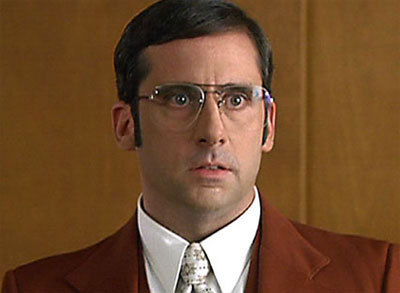I've noticed a trend with some games such as RIFT, Aion, Secret World, and Guild Wars 2, where the writers create a back story for the character. Some of these are minor, like in Secret World. Some of these are major, like in Guild Wars 2. These are all done to help the player get attached to the story of their characters and to give the writer something to base the story around. How else can you write for a character who has a blank slate? The best example of this is in Guild Wars 2, where you choose several background details about your character. Depending on what you choose, your character receives a different quest after the first initial one.
 |
| I thought this character was a girl for a good 2 minutes when I was just mashing buttons through this. |
Personally, I'm not a big fan of this method in Guild Wars 2. I didn't feel like it was my character that I was playing; it felt like I was playing with one of the characters that the game gave me. I was choosing one of three sets of character personalities that the game was saying, "These are the stories that you will see." It was also fairly obvious, at least from the human perspective, what story would come from that. Don't know your parents? That'll be the story. Wanted to join the circus? That'll be a story as well. Granted, the game offers several other permutations to that to spice it up a bit, in their defense. The whole bit for the humans of, "I never joined the circus", however, felt extremely random and specific to fit into many character's story. The entire world of Guild Wars 2 felt shrunk into several possible background options I had for my human character.
In City of Heroes: Going Rogue, we established the character's background as being someone who has super powers and is from Praetoria. Because you have super powers, you're automatically in the Powers Division. This was the extent to which we defined the player character. The fact that you were in Powers Division was one you could contest and ultimately ignore depending on one of the 4 branches of story that you chose. Each of those branches also had smaller choices you could make in them. For example, one branch is called Power (one of my favorite next to Responsibility), in which you're essentially a super-powered celebrity. One way to play this branch is basically a power mongering maniac who is willing to lie, cheat, and steal to be number one. Another way to play this branch is a person who becomes famous, but honestly believes what they're doing is right. I'm saying this from feedback we received from players on this branch.
 |
| Desdemona made a choice to wear hot pants. That choice has haunted her forever. |
I think this is a way that, going forward, developers can establish a stronger story and have players feel more attached to their characters. A good way to encourage this is to have a field to write a biography for your character. I loved this in City of Heroes, Champions Online, and Star Trek Online. It made me pause for a moment and think about my character's background. It could be anything. As the player goes through the game, choices that they make will help define their character to the developer and to themselves. As the developer, you don't know what motivation the player has behind running a specific branch of story and maybe the player doesn't either. However, putting a choice in that branch to make the player decide why they're doing this helps the player flesh out their own character's story and helps the developer see what kind of character they have.
Here's an example. In Going Rogue, I wrote an arc given out by the contact, Transmuter. You had assembled a number of other super-powered comrades to form your own group to hunt down someone who was killing members of the Powers Division. At one point, you are chasing down a big name in the Resistance who might be behind the killings, while your team is out investigating another lead. You get an SOS from your team, saying that the killer has appeared and is attacking them. The player has a choice in this instance. They can stop the mission and go save the team, letting the member of the Resistance go. Or, they can chase after the Resistance and sacrifice members of their team before going after the real killer. This (theoretically) makes the player ask themselves several questions. Why am I teamed with these people? What is my goal, justice or fame? Do I think the ends justify the means?
 |
| But what if I want to be a famous cop? |
I'd like to use an analogy for this, comparing it to a person's life. When you're born, you have a certain amount of things that are predefined: your gender, your skin color, your parents, your name, etc. Some of your "story" is already written, in as much as the family you're born into. However, your life is then defined by what you do, the choices you make, the things you pursue. Imagine if this way of thinking was applied to an MMO or any other game! The Mass Effect series did this pretty spot on, where Commander Shepard's background was defined a little bit, but her main story was punctuated by the choices you made in the game.
| Unless you're me, and didn't care at all about the human value of robots or AI. Bye bye, Geth! |
This way of design takes more work, as stories are no longer "stand alone". There are opportunities everywhere to reference a player's previous choice. Is this bad? I don't know, as we didn't do it very heavily on City of Heroes. It definitely calls for a much more organized design group and story. Personally, however, I would love it if I did side quest A in a zone, made a choice there, and had a quest that was completely different from that one later on make a reference to it. It would make me feel like I'm playing in a world where my decisions are remembered, and my character is defined by the choices I make, not the ones made for me before I even bought the game.
There's a lot more to crafting a character's story than this. You need to create an atmosphere that encourages the player to explore their own stories, create branches off of established lore, etc. Of course, this is all under the assumption that the player cares about story. If not, well, then lolwords.
| YOU'RE LEVEL 50! WHAT DO YOU MEAN, 'WHAT IS PARAGON CITY"?! |



/Update%2014/76-ffvi14_218.png)



















